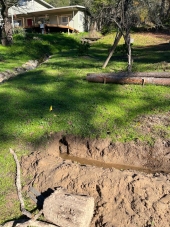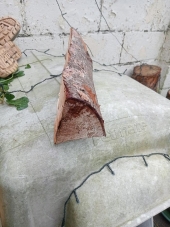



Kim Wills wrote:
Mark Reynolds wrote:
I'd look at planting some deep rooted plants that CAN break up the compaction. Forage radish, possibly alfalfa, turnips. The radishes will also collect nutrients and make them available to other plants when they die and decompose.
Daikon! "Daikon radish" can be up to a foot long and up to 3-4" thick. I have searched this topic to death because the spot where my kitchen garden will be has a sub layer of nearly solid clay; like, you could mold an ashtray out of it. I'll be ordering 3000 seeds for $8. The reviews complain it's more like 2000, lol, but that's still the best bargain I found. From what I hear, I'm supposed to plant the daikon all over, let it grow as long as possible, then chop & drop the greens and leave the daikon in the ground to decompose. This will add the biggest possible pockets of organic matter. I can't wait til spring to try it!

Leah Sattler wrote:hmm. I don't understand how the taproot thing could be true?? wouldn't you graft a desirable apple onto another apple tree? wouldn't all apple trees have or not have a tap root? just curious.
Carla Burke wrote:I'm not sure why, but the 'neither' option isn't working for me. I choose neither, not because I don't do them, but because where my preference is depends on my purpose. I shower to get clean, but use baths medicinally, for both mental/ emotional and physical healing, with epsom salts, oils, herbs, and essential oils, with or without the jets.



greg mosser wrote:smooth, gray, relatively thin bark could say beech around here. do you have european beech in your area?

